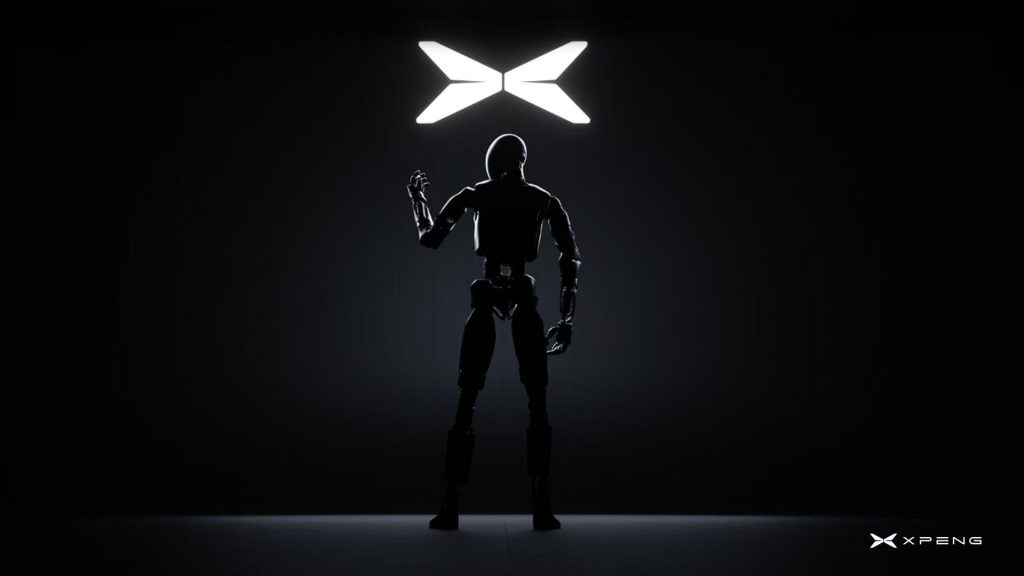From yesterday to today, a significant portion of the global internet has been abuzz with discussions about XPENG’s humanoid robot, IRON. This wave of curiosity has ignited everyone’s inner “Sherlock Holmes,” with netizens on platforms like Xiaohongshu (Little Red Book) speculating whether the robot’s gait demonstration at the launch event was actually a human in a costume. Amidst this sea of speculation, XPENG remains unfazed. When a netizen commented, “100% a real person inside,” XPENG’s CEO, He Xiaopeng, responded with a witty, “Thanks for the recognition.”

A New Era: XPENG Transitions from Car Manufacturer to AI Powerhouse
On November 6, XPENG Motors held its AI Day 2025 at its new headquarters in Guangzhou, officially declaring its transformation from a mere automobile company to a full-fledged AI enterprise. Leveraging its self-developed Xpeng VLA 2.0 large model, XPENG has spawned a comprehensive suite of AI-driven applications. The unveiling of the latest humanoid robot, IRON, immediately sparked intense discussions across the tech landscape.
XPENG has been深耕 (deeply engaged in) the robotics field for seven years, evolving from early quadrupedal forms to the fully humanoid stage seen today. IRON represents a significant leap forward with its new “human-like skeletal structure,” biomimetic muscle system, and “fully covered flexible skin,” drastically reducing its mechanical appearance and enhancing its resemblance to a real human.
Physical Attributes and Movement Capabilities
IRON stands at approximately 1.78 meters tall, towering over competitors like 1X’s NEO, and weighs in at 70 kg. Its hands utilize micro-harmonic joints, boasting 22 degrees of freedom (DOF), just five fewer than a human hand. This enables IRON to perform complex daily tasks such as folding clothes, wiping tables, and organizing items. With a total of 65 DOFs throughout its body, including human-like spinal movement capabilities—ten more than NEO—IRON exhibits remarkable flexibility and dexterity.
The robot’s improved gait, appearing more stable, natural, and even possessing a certain presence, has left a lasting impression. While the official details on backend control remain sparse, the on-stage demonstration alone was enough to captivate audiences. This advanced movement is attributed to its sophisticated motion “cerebellum,” though XPENG has not divulged further technical specifics. However, judging by the performance and hardware of its predecessor, IRON’s capabilities are undoubtedly impressive.

Customizable Appearance and Tactile Experience
Unlike NEO’s conservative fencing-coach-like design, IRON offers customizable male or female features. Through a flexible 3D mesh structure and soft skin materials, it achieves lifelike body curves and a gentle touch. Similar to NEO, the use of 3D-printed honeycomb mesh fabric provides both structural integrity and flexibility, ensuring a pleasant tactile experience.
The Brain Behind the Machine: XPENG’s AI Innovation
At the heart of IRON lies XPENG’s self-developed AI brain, powered by three Turin AI chips with a combined computing power of 2,250 TOPS. This AI system integrates VLT (Vision-Language-Task), VLA (Vision-Language-Action), and VLM (Vision-Language-Model) cognitive models, enabling seamless visual perception, language understanding, and action decision-making within a unified framework. This allows IRON to perceive its environment, make decisions, and interact naturally with humans.
The robot’s head features a 3D curved display screen, serving not only as its “face” but also as an interactive interface, facilitating more intuitive human-machine communication.
Power and Endurance
IRON is equipped with a solid-state battery, although XPENG has not yet disclosed its capacity or续航 (endurance). This choice of battery technology hints at potential advancements in energy storage and efficiency, crucial for the robot’s operational longevity.
Cultural References and Public Perception
Some netizens have drawn comparisons between IRON and the iconic Lilith from the anime “Neon Genesis Evangelion,” jokingly inquiring about the release date of the “Evangelion Unit-01.” While these references add a layer of cultural fun to the discussion, they also underscore the robot’s striking design and the public’s fascination with its human-like qualities.

Strategic Roadmap: Gradual Integration into Commercial and Industrial Settings
Compared to competitors like Tesla and 1X, which have set ambitious goals for mass production by 2026, XPENG adopts a more cautious approach. The company plans to begin量产 (mass production) of IRON in 2026, initially deploying the robots within its own commercial environments. Potential roles include serving as exhibition hall guides, receptionists, or sales consultants.
XPENG has already experimented with deploying IRON on production lines for tasks such as screw tightening. However, these trials revealed that the robot’s efficiency lagged behind human workers, with higher maintenance costs and susceptibility to damage. Consequently, XPENG has pragmatically concluded that large-scale industrial deployment is not yet feasible.
He Xiaopeng, XPENG’s CEO, openly acknowledges these challenges. He predicts that humanoid robots will eventually find their place in both industrial and domestic settings, but the pace of adoption will be gradual. He estimates that industrial applications may take 3-5 years, while widespread household adoption could require 5-10 years.
Collaborative Ecosystem and Future Prospects
Starting next year, IRON will make its debut as a staff member in XPENG showrooms worldwide. Additionally, XPENG plans to launch the IRON SDK (Software Development Kit), opening up development interfaces to third parties and inviting collaborative innovation across various application scenarios. Among the initial partners are major enterprises like Baosteel Group.
In conclusion, XPENG’s IRON represents a significant stride in humanoid robotics, blending cutting-edge AI with human-like physicality and interactivity. While debates over its authenticity persist, the robot’s capabilities and the company’s strategic vision paint a promising picture for the future of AI and robotics. As IRON prepares to step into commercial roles, the world watches with anticipation to see how this technological marvel will reshape industries and daily life.










暂无评论内容